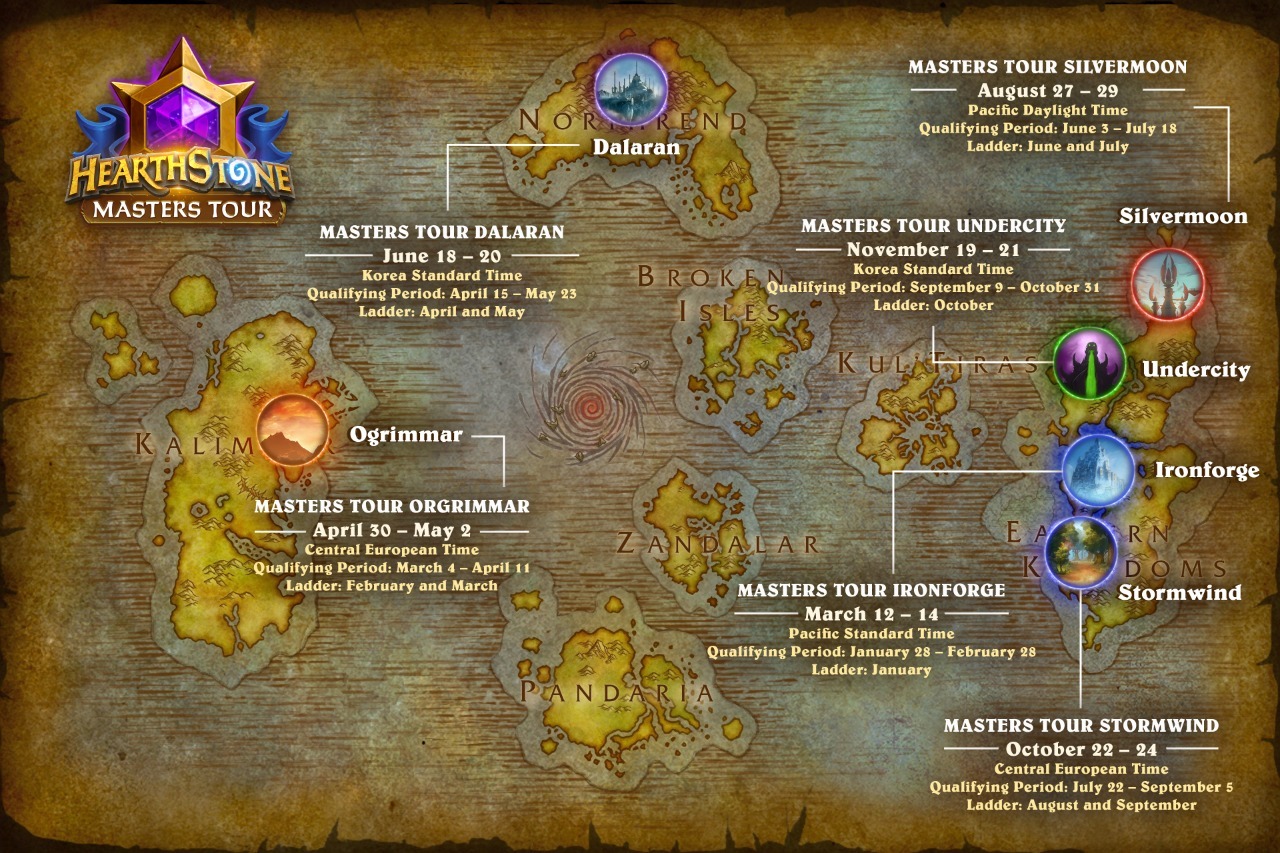Since the 2021 Masters Tour season was recently announced (here), I thought that I would explain the best way to approach a conquest format.
What is Conquest?
In conquest, each player must win with all of their decks. Hearthstone tournaments employ a modified form of conquest with a single ban. Before a round, each player must secretly choose a deck to “ban” from their opponent set of decks. Then play commences where each player must win with each of their remaining decks. Best of three conquest with one ban (three decks per player) is used for qualifiers, while best of five conquest with one ban (four decks per player) is used for Masters Tours
Strategy
There are two different important strategic decisions in playing conquest: banning and the order you play your decks. In this article, I will not go into banning, but when choosing a deck to ban you need to remember to always consider the situation from your opponent’s perspective. Identifying the deck that they are likely to ban will allow you to make a more informed decision in your ban. Before the next Masters Tour, I will update the Conquest Calculator to include a ban calculation, but for now, let’s discuss deck order.
First, let me clarify that if you could know what your opponent will queue there is a single response that is always best. I will be discussing the Nash equilibrium mixed strategy solutions in other words the optimal strategy to make it so that your opponent has no best response. If both players were to land on Nash equilibrium strategies. then there would be no incentive for either player to deviate from their strategy. If all of that was confusing, I suggest reading this paper which explains the concepts more in-depth.
In best of three conquest, the equilibrium strategy is to actually flip a coin to choose which order to play decks. Note that this is not to say the order does not matter; in fact, if your opponent can predict your decision, then they will have an advantage (which can be quite significant). If each player has two or more decks to choose from (excluding the 2v2 case), the mixed strategy solutions become more complicated. The Conquest Calculator provides the mixed-strategy solutions by employing rollback analysis over every possible strategy. Although these mixed strategy solutions provide valuable insight, the most important thing is to not be predictable. I would suggest using the calculator to find any dominated strategies (that is strategies that are always worse than another strategy) and then attempt to predict your opponent’s queue order (though the mixed strategies are always a safe option).
Selecting a Deck Line-up
This is where the Conquest Calculator helps the most. In general, there are two philosophies in constructing line-ups: countering another line-up or just selecting the most powerful decks. The success of these strategies depends heavily on the metagame and the win-rates of each deck. However, these are often difficult to compare by hand, so I would employ the calculator to make concrete comparisons using data from HSReplay for matchup statistics in order to choose the philosophy to follow.
Conclusion
That is all I have to say for now on the conquest format. I will continue to post line-ups for upcoming Masters Tours and qualifier events in the future. If you have any questions, feel free to contact me @Prestcg on twitter.

